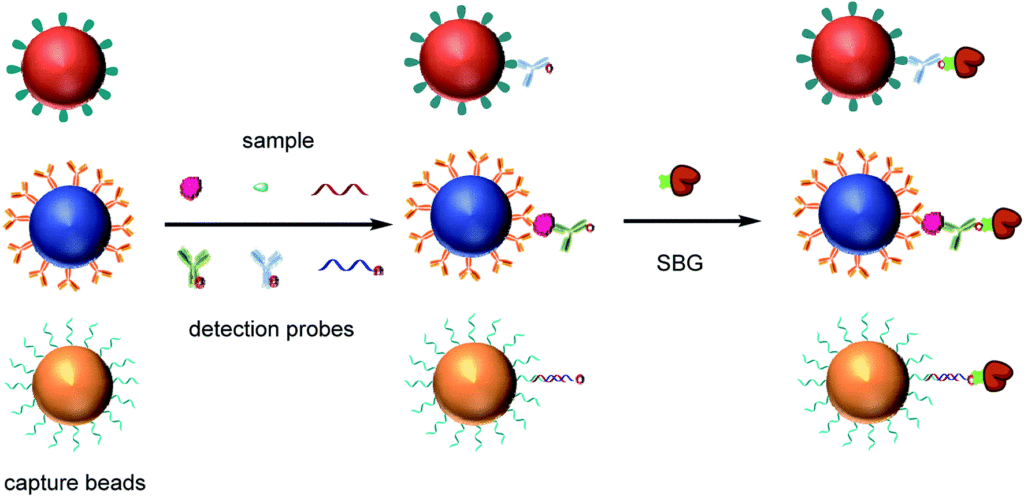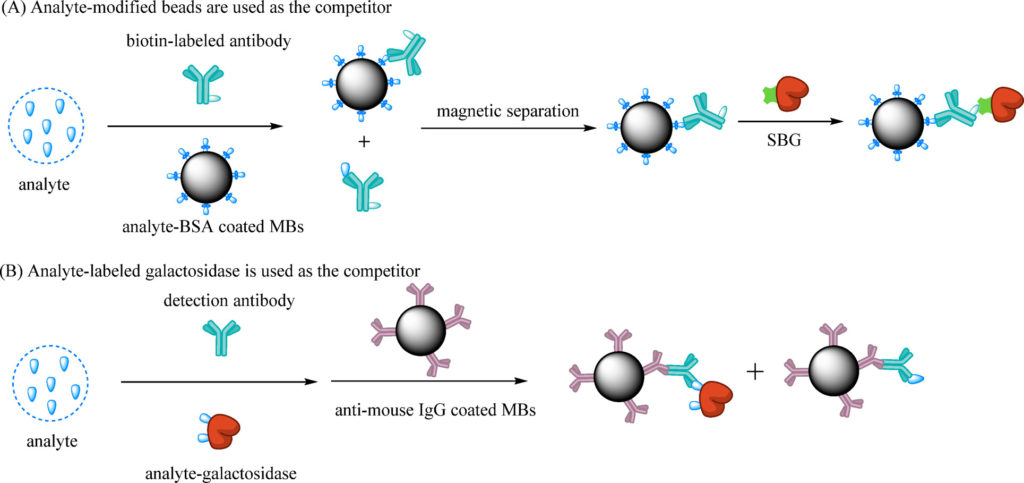Small Molecules
Small-molecule detection is important for many applications including clinical diagnostics, drug discovery, and measurements of environmental samples and agricultural products. Current techniques for small-molecule detection suffer from various limitations including low analytical sensitivity and complex sample processing. Furthermore, as a result of their small size, small molecules are difficult to detect using an antibody pair in a traditional sandwich assay format. To overcome these limitations, we developed an ultrasensitive competitive immunoassay for small-molecule detection using Single Molecule Arrays (Simoa). We show that the competitive Simoa assay is approximately 50-fold more sensitive than the conventional ELISA. We performed theoretical calculations to determine the factors that influence the sensitivity of competitive Simoa assays and used them to achieve maximal sensitivity. We also demonstrate detection of small molecules in complex biological samples. We show that the competitive Simoa assay is a simple, fast, and highly sensitive approach for ultrasensitive detection of small molecules.
Simultaneous detection of small molecules, proteins and microRNAs

Biological samples such as blood, urine, cerebrospinal fluid and saliva contain a large variety of proteins, nucleic acids, and small molecules. These molecules can serve as potential biomarkers of disease and therefore, it is desirable to simultaneously detect multiple biomarkers in one sample. Current detection techniques suffer from various limitations including low analytical sensitivity and complex sample processing. In this project, we developed an ultrasensitive method for simultaneous detection of small molecules, proteins and microRNAs using single molecule arrays (Simoa). Dye-encoded beads modified with specific capture probes were used to quantify each analyte. Competitive and sandwich immunoassays were combined with a direct nucleic acid hybridization assay for simultaneous detection of cortisol, interleukin 6 and microRNA 141. The multi-analyte Simoa assay shows high sensitivity and specificity, which provides a powerful tool for the analysis of many different samples.
Ultrasensitive Detection of Enzymatic Activity Using Single Molecule Arrays
Enzyme assays are important for many applications including clinical diagnostics, functional proteomics, and drug discovery. Current methods for enzymatic activity measurement often suffer from low analytical sensitivity. We developed an ultrasensitive method for the detection of enzymatic activity using Single Molecule Arrays (eSimoa). The eSimoa assay is accomplished by conjugating substrates to paramagnetic beads and measuring the conversion of substrates to products using single molecule analysis. We demonstrated the eSimoa method for the detection of protein kinases, telomerase, histone H3 methyltransferase SET7/9, and polypeptide N-acetylgalactosaminyltransferase with unprecedented sensitivity. In addition, we tested enzyme inhibition and performed theoretical calculations for the binding of inhibitor to its target enzyme and show the need for an ultrasensitive enzymatic assay to evaluate the potency of tight binding inhibitors. The eSimoa assay was successfully used to determine inhibition constants of both bosutinib and dasatinib. Due to the ultrasensitivity of this method, we also were able to measure the kinase activities at the single cell level. We show that the eSimoa assay is a simple, fast, and highly sensitive approach, which can be easily extended to detect a variety of other enzymes, providing a promising platform for enzyme-related fundamental research and inhibitor screening.

